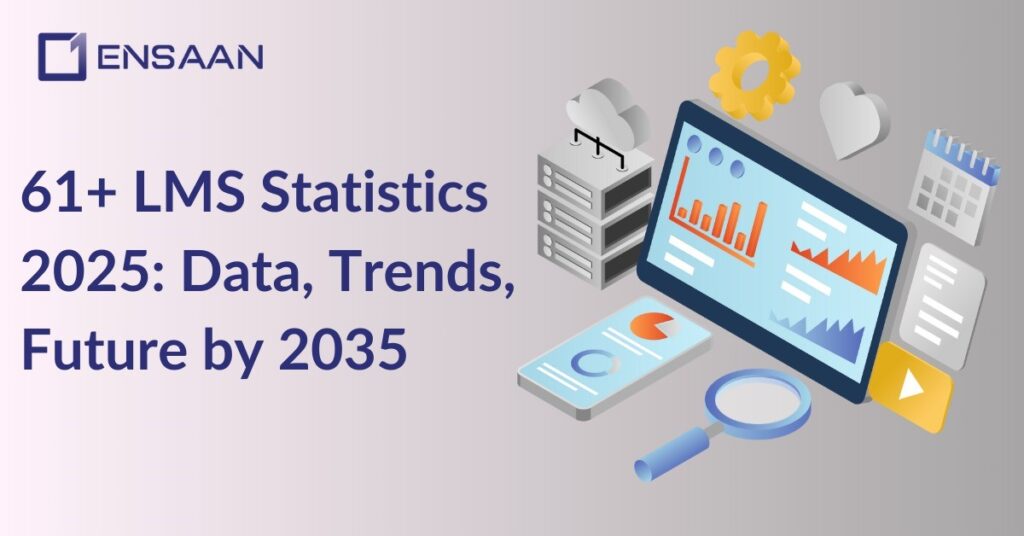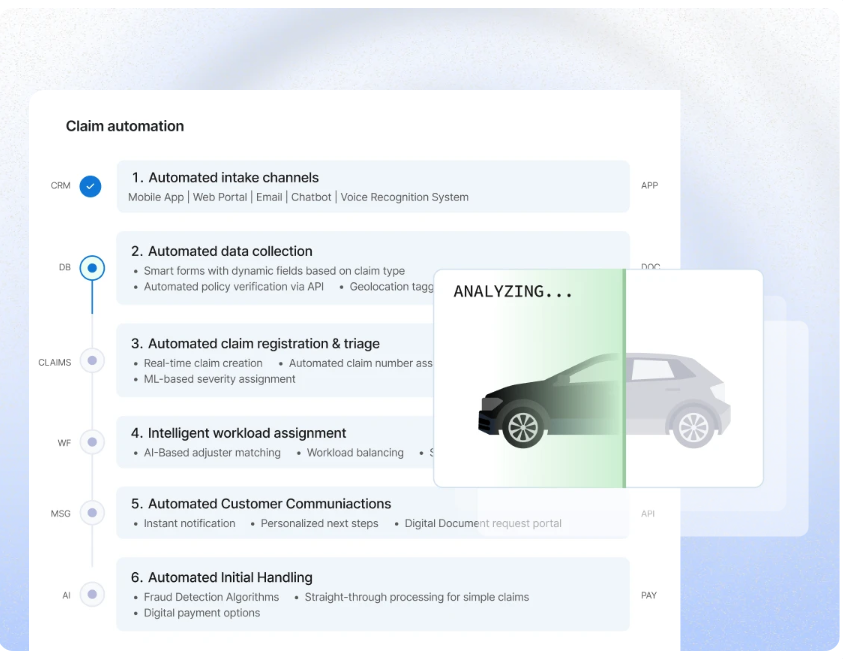Digital technology has Transform teaching and learning, making education more accessible and effective than ever.
Enterprise Learning Management Systems (LMS) are instrumental in this transition, offering a platform for managing academic programs, resources, and training materials.
LMS are beneficial both to students and teachers by making content creation, sharing, and management much simpler.
This article investigates LMS adoption, market trends, usage and their increasing role in education as well as prospects of the LMS industry.
Table of contents
- Global LMS Market Statistics 2025
- LMS Software Adoption Statistics
- Barriers to LMS Adoption
- LMS User Statistics
- LMS Accessibility Statistics
- Current LMS Statistics and Predictions
- LXP Statistics
- How LMS Enhances Employee Training and Development
- The Future of Learning: Mobile-First and Personalized
- How Online Learning Trends Impact LMS Development
- The Future of LMS
- FAQ

Global LMS Market Statistics 2025
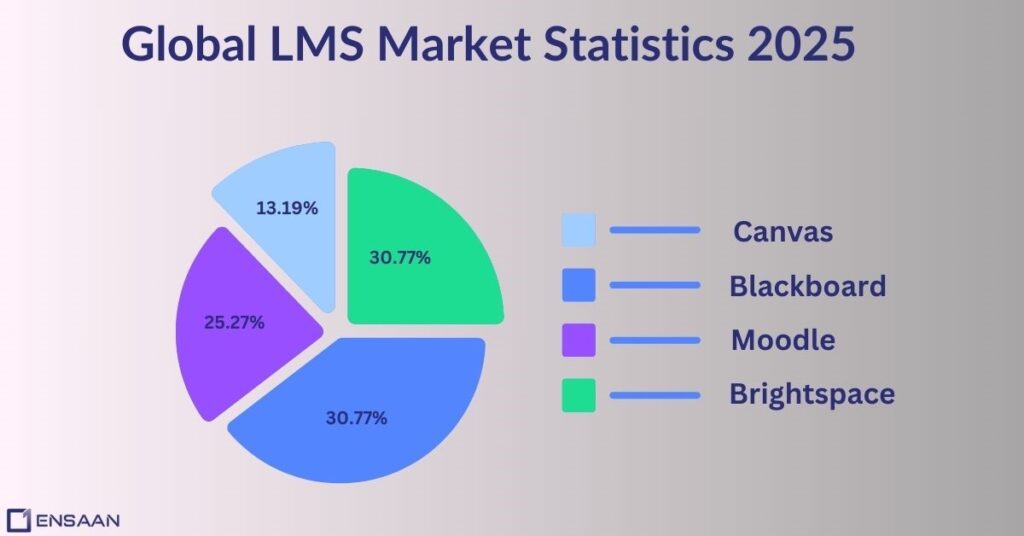
Learning Management Systems (LMS) have their origins in 1924 when psychology professor Sidney Pressey created the first electronic teaching device resembling a typewriter to assist students in answering multiple-choice questions more quickly and free up teachers for more creative activities.
Since then, LMS platforms have advanced significantly, making it simpler for educators and learners alike to access study materials in multiple forms including digital storytelling.
Recent studies predict that the LMS market could reach $28.1 billion by 2025 due to factors like government support, the rise of digital learning platforms like Coursera and BYOD policies as well as advancements in AI/ML technologies.
These innovations have significantly boosted LMS revenues, underscoring its increasing significance in education and training.
- Projected growth: US $43.95 billion and a CAGR of 31.87% (2023-2028).
- Global eLearning market growth: 14% annually
- Asia’s eLearning growth rate: 17.3% per year.
- Mobile learning is expected to increase at a CAGR of 36.45% (2020-2027).
- The global eLearning market grows at an annual rate of 14%.
- Canvas and Blackboard dominate the US higher education LMS market, each holding 28% of the market share.
LMS Software Adoption Statistics
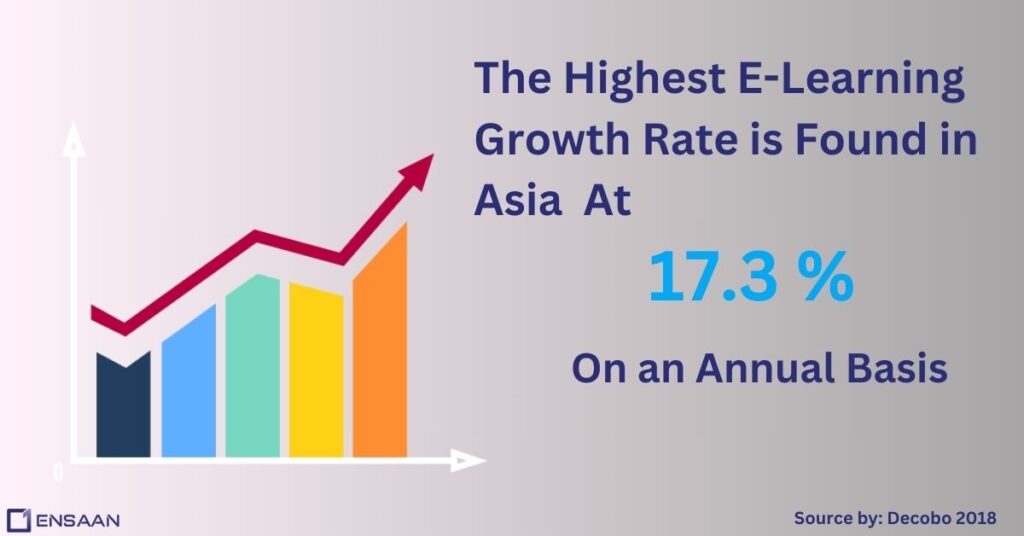
Innovations in information and communication technology (ICT) and the rise of learning management system platforms (LMS) have greatly transformed the education sector.
Today, many educational institutions utilize LMS to enhance teaching and learning methods that are more efficient for their students.
Teachers also benefit from flexible course creation tools, including screen recording and performance tracking features.
Today, universities and schools around the world rely heavily on LMSs for their daily operations.
LMS platforms play a pivotal role in meeting today’s rising educational needs, especially distance learning solutions through advanced ICT solutions.
This trend highlights the significance of LMSs in modernizing education and increasing access to learning for all.
1. LMS Adoption in North America:
Innovations in information and communication technology (ICT) and the rise of learning management system platforms (LMS) have greatly transformed the education sector.
Today, many educational institutions use LMS to enhance teaching and learning methods that are more efficient for their students.
Teachers also benefit from flexible course creation tools, including screen recording and performance tracking features.
Today, universities and schools around the world rely heavily on LMSs for their daily operations.
LMS platforms play a pivotal role in meeting today’s rising educational needs, especially distance learning solutions through advanced ICT solutions.
This trend highlights the significance of LMS in modernizing education and increasing access to learning for all.
Here are some key statistics highlighting LMS usage in the North America region:
- Canvas market share in North America: 35%.
- North America’s contribution to global market growth: 33% during the forecast period (2024-2028).
- The compound annual growth rate (CAGR) of LMS adoption in North America stands at 4%.
- Canvas is the most popular LMS in North America, with 19,238,279 enrollees by the end of 2019.
- Moodle had 11,289,190 enrollees, while Blackboard recorded 10,566,791 enrollees as of 2019.
- Canvas leads the LMS market share in the region, holding 35% of the market.
- These statistics reflect the widespread and growing use of LMS platforms in North America for both education and corporate training.
2. LMS Adoption in Latin America:
LMS adoption in Latin America has seen explosive growth due to mobile technology’s rising tide, opening new opportunities for the education technology sector.
Between 2016 and 2020, Asia Pacific’s eLearning market experienced rapid expansion at an expected compound annual compound growth rate of 14% over five years.
Corporate learning also plays an integral part, with businesses adopting online platforms for improved training and meeting global demands.
According to a 2019 Endeavor INSIGHT EdTech study, online learning’s ease and its association with improved job prospects are driving this trend.
Here are a few key LMS adoption and eLearning statistics for Latin America:
- The eLearning market was valued at $2.1 billion in 2016 and is expected to reach $3 billion by 2023.
- Latin America is the 4th largest edtech market globally by revenue.
- Over 12 million adults in 20 Latin American countries are enrolled in online education.
- From 2016 to 2017, user growth for Lingo kids, a language-learning platform, surged by 489% in Argentina, 500% in Venezuela, and 425% in Brazil.
These trends show the region’s increasing reliance on digital tools for education and corporate training, fueled by mobile usage and the demand for flexible learning solutions.
3. LMS Adoption in Europe:
Online education is gaining popularity across Europe, with many universities offering online degrees to international students.
Educational institutions providing both short courses and full degree programs continue to thrive, with enrollment numbers increasing year after year.
According to Eurostat data (2019), Finland leads the way in online learning, with the highest number of individuals participating in online courses.
Other countries following Finland in popularity include the United Kingdom, Sweden, and Spain.
Key statistics about LMS adoption in Europe include:
- The European eLearning market is expected to grow by US $28 billion over 5 years.
- The European LMS market value is projected to rise from US $4,954 million in 2021 to US $25,014 million by 2030, with a CAGR of 19.42% from 2022 to 2030.
- 21% of individuals in Finland have taken at least one online course, followed by the United Kingdom at 19%, Sweden at 18%, and Spain at 15%.
- 12.5% of LMS platforms in Europe are cloud-based.
- By 2022, Europe is expected to generate the second-highest revenue in the global LMS market.
- Eastern Europe is experiencing 16.9% annual growth in LMS adoption.
These trends highlight the increasing reliance on LMS for both higher education and professional development, particularly in Finland and other European countries.
4. LMS Adoption in Asia Pacific and Africa:
Asia Pacific
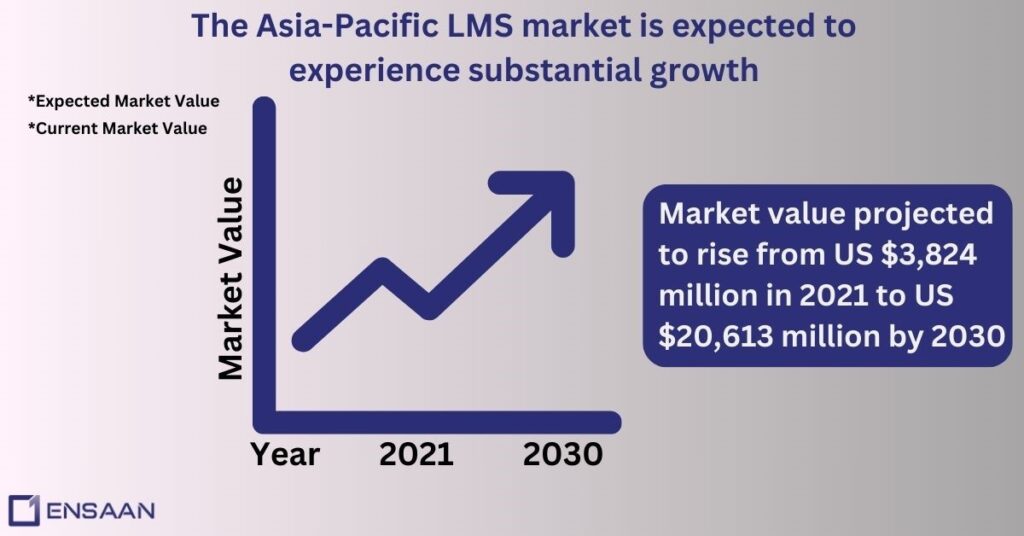
LMS adoption in the Asia Pacific region is being driven by the increasing demand for eLearning and the popularity of on-the-go learning.
Economic improvements and better access to educational resources in developing countries are expected to boost the adoption of LMS platforms in the near future.
Key statistics about LMS adoption in Asia Pacific include:
- The Asia-Pacific LMS market is expected to experience substantial growth, with its value projected to rise from US $3,824 million in 2021 to US $20,613 million by 2030, driven by digital infrastructure enhancements and technology adoption.
- Market value is expected to rise from US $3,824 million in 2021 to US $20,613 million by 2030.
- Reflecting a CAGR of 20.28% from 2022 to 2030.
- Growth was driven by government initiatives, digital infrastructure improvements, and the adoption of video conferencing tools.
- A large student population and advancing technology contribute to the rising demand for eLearning and online education.
Middle East and Africa LMS Stats
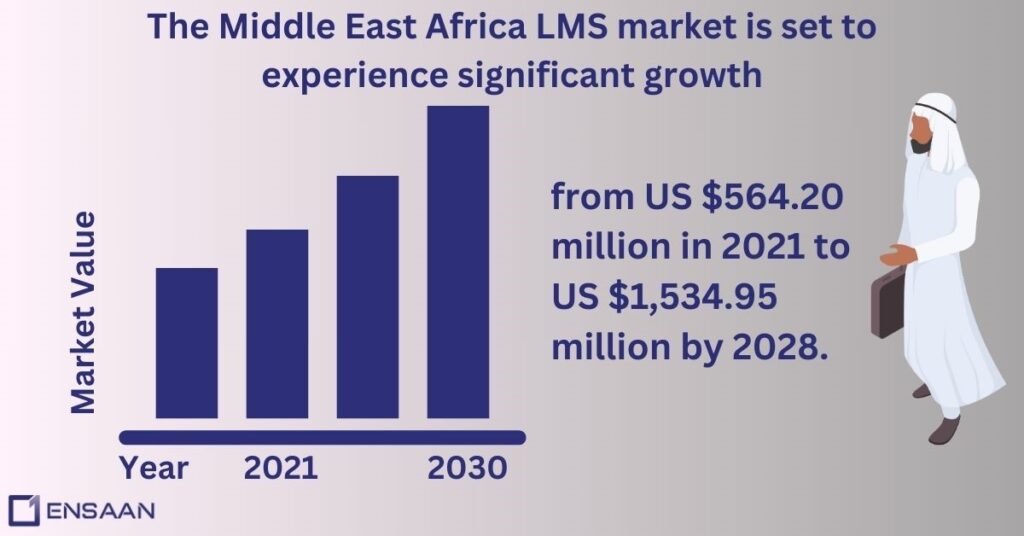
Education is a cornerstone of development in Africa, and as a result, many African countries have started to adopt eLearning practices.
Despite its growing potential, challenges such as limited Internet access, lack of online curriculum, and insufficient teacher training continue to hinder the successful implementation of LMS in the region.
Key statistics about LMS adoption in Middle East and Africa LMS Stats include:
- Projected to grow from US $564.20 million in 2021 to US $1,534.95 million by 2028.
- CAGR of 15.4% during this period.
- Cloud-based LMS led the market in 2020 and is expected to continue growing rapidly.
- Market segments include deployment mode, delivery mode, end-user, and country.
- Delivery modes encompass distance learning, instructor-led training, and other methods.
Barriers to LMS Adoption
Adopting a Learning Management System (LMS) in higher education needs careful planning.
Key factors for success include an easy-to-use design, mobile compatibility, and strong support systems.
Institutions must guide teachers and students well, but as more users join, offering personalized support can become difficult.
To make adoption smoother, Learning and Development (L&D) professionals are working to simplify LMS platforms and boost engagement.
Here are some key challenges institutions face when implementing LMS solutions:
- 30% of L&D professionals aim to incorporate games and simulations in their eLearning programs by the end of 2020.
- 93% of L&D professionals plan to develop live online learning for their programs, while 33% want to develop Massive Open Online Courses (MOOC).
- 64% of digital learning program developers plan to include open resources in their programs, while 35% want to include user-generated content.
- 58% of L&D professionals aim to introduce enterprise social networks to improve learning approaches.
Key Barriers to LMS Adoption:
- Integration Challenges: A major barrier is the inability of LMS programs to integrate seamlessly with other digital platforms. 52% of users report this as a significant issue.
- Poor User Experience: Many users are dissatisfied with the user experience, with 51% citing this as a barrier to satisfaction.
- Cost: The high cost of LMS programs is a common barrier, impacting 44% of users. However, the negative impact of cost can be reduced by the growing availability of affordable online programs.
- Mobile Compatibility: 24% of LMS users are dissatisfied with programs that lack mobile capability, which limits accessibility.
- Functionality and Support: 67% of LMS users prefer programs that offer comprehensive functionalities, while 66% desire better customer and technical support.
These barriers highlight the need for continuous innovation and improvement in LMS platforms to ensure they meet the diverse needs of users, enhance the learning experience, and make the adoption process smoother and more effective.
LMS User Statistics
A Learning Management System (LMS) is software used to deliver training and educational courses.
Many colleges and universities use LMS to offer online and distance learning. It’s also used in the corporate world for employee training and by entrepreneurs for short courses in skills like marketing and accounting.
Additionally, hobbyists and self-learners use LMS for topics like photography, gardening, and fitness.
Currently, there are 73.8 million LMS users. About 87% of them use web-based LMS. Most users are corporate executives (65%) and managers (35%).
Key LMS Statistics:
- 37% of users are adults, and 28% are younger.
- In the UK, 24% of people who buy online learning materials are aged 16-24.
- 90% of students prefer online learning over traditional methods, and 49% have taken at least one online course.
- Around 4.6 million college students study online.
- The education sector makes up 21% of the LMS market.
- Other industries using LMS include technology (12%), manufacturing (9%), and healthcare (7%).
This shows the wide range of people and sectors using LMS for learning and training.
LMS Accessibility Statistics
Accessibility is key to successful LMS adoption, ensuring that schools, universities, and organizations make their platforms user-friendly.
With most LMS platforms being cloud-based, users can access them on desktops, laptops, tablets, and mobile devices. Mobile learning has gained popularity, prompting LMS developers to focus on multi-device compatibility.
Key LMS Accessibility Insights:
- 89% of employees use desktops, 78% use laptops, and 25% use mobile devices to access LMS platforms.
- 97% of employees believe tablet adoption improves learning as it supports flexibility.
- The mobile learning market was valued at $37.6 million in 2020.
- 76% of online learners use their own devices for accessing course content.
- Learners using smartphones complete course materials 45% faster than those on computers.
This highlights the growing importance of mobile compatibility and device flexibility for effective learning.
Current LMS Statistics and Predictions
Educational institutions are leveraging technology to modernize and transform their teaching methods.
The Global Education Census Report (2019) highlights increasing classroom technology use, including 48% of students using desktops, 42% using smartphones, 33% using interactive whiteboards, and 20% using tablets.
LMS platforms play a crucial role in higher education, with emerging trends such as MOOC, personalized learning, learning experience platforms (LXP), and mobile learning reshaping the eLearning landscape.
MOOC Platforms Statistics:
Massive Open Online Courses (MOOC) are online programs designed to provide accessible and affordable remote education.
These courses, offered by prestigious universities like Harvard and MIT, have gained popularity due to lower costs, flexible schedules, and simple registration processes.
Key MOOC Insights:
- Over 900 universities worldwide now offer 13,500+ MOOC.
- Around 2,500 courses were launched by 450 universities in 2019.
- Technology courses rank highest in popularity, making up 19.8% of all MOOCs in 2019, followed by business-related courses (19.7%).
Leading MOOC platforms:
- Coursera: 37 million users (largest platform).
- edX: 18 million users.
- XuetangX: 14 million users.
The rising demand for shorter, flexible courses continues to fuel MOOC growth, transforming education accessibility globally.
Mobile Learning Statistics:
The rapid adoption of mobile devices is revolutionizing learning strategies across industries.
Educational institutions and corporations alike are leveraging mobile learning to cater to tech-savvy Millennials and Gen-Z learners, who now dominate the global student and workforce populations.
Key Mobile Learning Statistics
- The mobile learning market was valued at $27.32 billion in 2020 and is projected to grow at a CAGR of 36.45% from 2020 to 2027.
- 70% of learners report higher motivation levels when using mobile devices compared to computers for learning.
- 29% of mobile learners feel confident applying the knowledge gained from mobile learning directly to practical tasks.
- 72% of mobile users find learning modules more engaging when accessed via mobile devices.
- 30% of smartphone users utilize their devices to access organizational training materials, emphasizing the convenience of mobile-enabled learning.
Benefits of Mobile Learning
A study published in the Journal of Continuing Education in the Health Professions revealed top advantages of mobile learning:
- Enhanced knowledge acquisition.
- Access to updated educational resources.
- Verification of accurate and timely information.
The increasing demand for mobile learning is shaping how organizations and educational institutions approach their teaching methods, paving the way for mobile-first strategies in the coming years.
Personalized Learning Experience Statistics
Personalized learning, which Customized educational content to individual learner needs and preferences, is transforming the education landscape.
It has become a central focus for educational technology (edtech) and philanthropic efforts aimed at improving learning outcomes.
Key Statistics on Personalized Learning
- 25% of educators believe personalized learning is a promising educational strategy.
- 21% perceive it as a transformative approach for improving K-12 curricula.
- However, 11% of teachers view it as a passing trend, and 8% consider it a potential threat to public education.
Why Personalized Learning Matters
Since 2009, initiatives like the Bill & Melinda Gates Foundation’s $300 million investment in personalized learning have fueled research into its effectiveness.
Studies show that personalized learning improves student engagement, adapts to diverse learning paces, and enhances comprehension by aligning educational material with individual needs.
LXP Statistics
Learning Experience Platforms (LXP) represent the next evolution of learning technology, shifting the control of learning from administrators to learners.
Unlike traditional LMS platforms, LXP emphasizes learner autonomy and creates a more engaging and exploratory learning environment.
Key LXP Statistics
- By 2020, the LXP market was valued at $200 million, with an annual growth rate doubling its size.
- By 2023, the LXP market was projected to grow to $15.7 billion.
- Organizations increasingly transition from LMS to LXPs due to the latter’s collaborative and personalized approach to learning.
Key Differences Between LMS and LXP
- LMS: Administrator-driven, focuses on structured training and compliance.
- LXP: Learner-driven, enables knowledge management, content discovery, and personalized experiences.
How LMS Enhances Employee Training and Development?
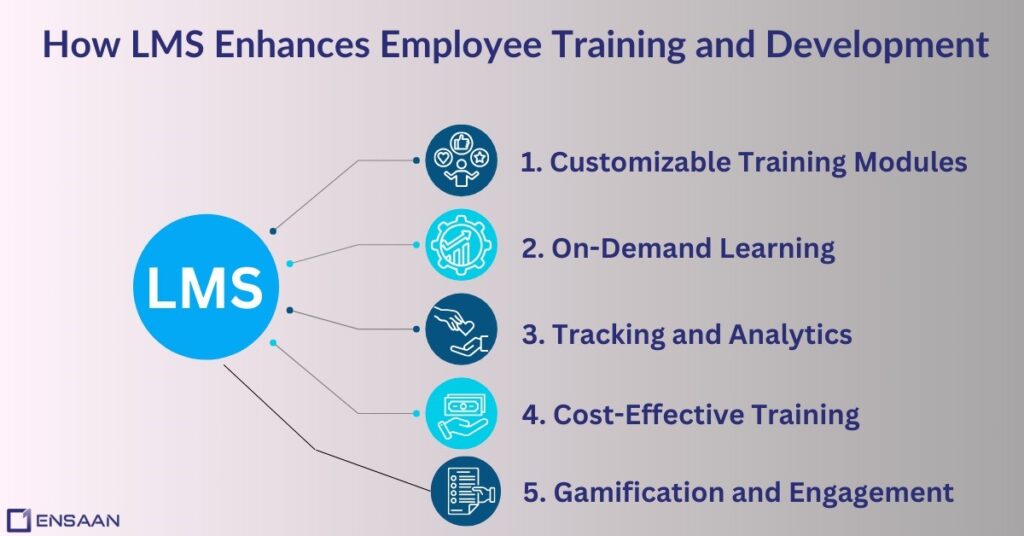
Learning Management Systems (LMS) have become indispensable in corporate environments, driving efficient training and professional development.
With the growing emphasis on upskilling and reskilling, LMS platforms provide solutions tailored to organizational and employee needs.
1. Customizable Training Modules:
LMS platforms enable the creation of role-specific training programs.
These modules target the exact skills and knowledge employees need, ensuring alignment with job responsibilities and organizational goals.
2. On-Demand Learning:
Learners can access content anytime, anywhere, via mobile devices, laptops, or desktops. This flexibility supports continuous learning and accommodates diverse schedules.
3. Tracking and Analytics:
LMS systems offer detailed insights into employee progress, completion rates, and knowledge retention.
Analytics empower organizations to identify skill gaps and improve training effectiveness.
4. Cost-Effective Training:
By eliminating travel, venue, and printing costs, LMS platforms reduce the expenses associated with traditional in-person training, while maintaining content quality and accessibility.
5. Gamification and Engagement:
LMS platforms incorporate gamified elements like badges, leaderboards, and rewards to enhance motivation. These interactive features encourage employees to complete courses while fostering a sense of achievement.
The Future of Learning: Mobile-First and Personalized
The combined rise of mobile learning, personalized learning, and LXPs indicates a shift toward more learner-centric strategies in both education and corporate training.
Organizations and educational institutions investing in these technologies will reap the benefits of increased engagement, efficiency, and adaptability in their learning initiatives.
As these trends evolve, adopting a comprehensive and forward-thinking approach to LMS and learning technologies will be critical to staying competitive in an ever-changing landscape.
How Online Learning Trends Impact LMS Development
Online learning is transforming LMS platforms to be more flexible, accessible, and personalized.
With more students and businesses adopting digital education, LMS systems are evolving to meet modern needs.
Key Changes in LMS
- Flexible Learning: Online courses, like affordable master’s programs, drive LMS platforms to support mobile access, flexible schedules, and self-paced learning.
- Smarter Systems: LMS tools now use AI to personalize learning, automate tasks, and track performance for better results.
- Better User Experience: Features like gamification and interactive tools make learning engaging and easy to use.
The Future of LMS
LMS platforms are shaping the future of education by making learning more digital and accessible. Key trends include:
- Mobile Learning: Learning on phones and tablets is becoming common.
- Personalized Training: Courses are tailored to individual learner needs.
- Technology-Driven Growth: AI and other innovations will create modern, digital-first learning environments.
LMS platforms will continue to grow, making education flexible, efficient, and ready for the future.
Key Insights
- LMS Market Growth: The LMS market is set to reach $28.1 billion by 2025, fueled by digital learning, AI advancements, and government initiatives.
- Global Adoption: LMS usage is growing worldwide, with North America leading and significant expansion in Europe, Asia Pacific, and Latin America.
- User Base: LMS platforms cater to executives, managers, students, and self-learners. Nearly 90% of students prefer online learning, with 87% using web-based systems.
- Challenges: Barriers like integration issues, high costs, poor user experience, and limited mobile support need to be addressed.
- Mobile Learning: Mobile learning is booming, valued at $27.32 billion in 2020, making education more engaging and accessible.
- Personalized Learning: Customized learning experiences are in demand, supported by advanced technology and investments.
- Learning Experience Platforms (LXP): LXPs are rising, offering more control and set to grow to $15.7 billion soon.
- Future Trends: The focus is on AI, mobile learning, and flexible, personalized programs to meet diverse learner needs.
You can choose the leading Cornerstone LMS in the UAE for learning in multiple languages

FAQ
An LMS is a tool that helps organize, deliver, and track training or learning programs.
It allows people to learn anytime, anywhere using their phones or tablets.
LMS is admin-controlled, while LXP lets users explore and learn freely.
Yes, it improves skills, tracks progress, and boosts job performance.
It Customized lessons to match each learner’s pace and needs.
Sources:
- Clark, D. (2020). EU: Share of Individuals Doing an Online Course 2019. Statista.
- Chaurasiya, M., & Sharma, Y. (2016). Asia-Pacific Learning Management Systems Market Opportunity Analysis and Industry Forecast, 2014-2022. Pune, India: Allied Market Research.
- Verified Market Research (2019). Mobile Learning Market Size, Share, Trends, Opportunities & Forecasts. Verified Market Research.
- Wadhwani, P., & Gankar, S. (2020). E-Learning Market Industry Analysis Report, Regional Outlook, Growth Potential, Competitive Market Share & Forecast, 2020 2026. GMInsights.
- Research & Markets (2020). LMS market Global forecast to 2023. Research and Markets
- Moriera, I. (2015, February 27). Asia E-learning and LMS Markets Infographics. Docebo.

